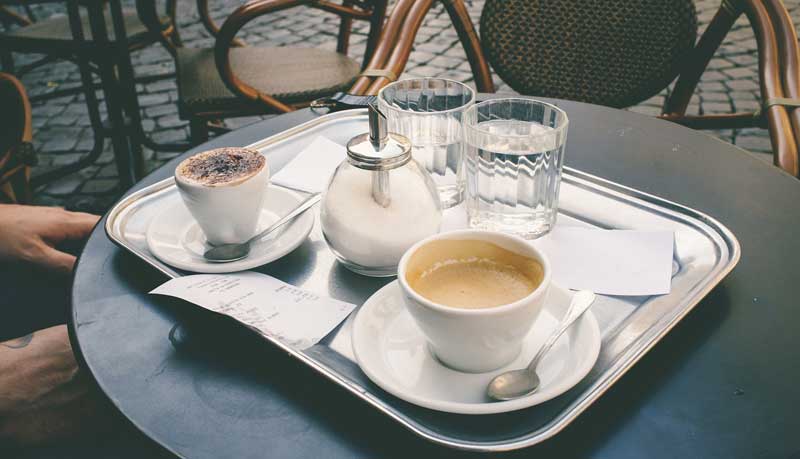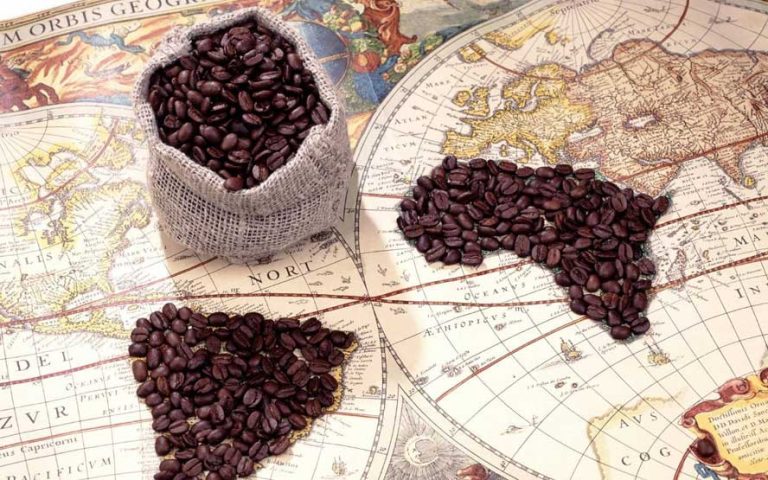Welcome to the world of Italian coffee culture, where espresso reigns supreme and plays a central role in daily life.
In this article, we will delve into the significance of espresso in Italian culture, the art of making the perfect cup, and traditional Italian coffee variants like the beloved cappuccino.
We will also explore how coffee pairs with Italian cuisine and take a closer look at the enchanting world of Italian coffee culture, with a special focus on Serafina Restaurant.
We will compare espresso with other global coffee variants and discuss the impact of Italian coffee culture on worldwide coffee trends.
Get ready to embrace the diversity of coffee cultures and explore unique coffee rituals around the world.
So grab a cup of your favorite brew and join us on a journey through the rich and flavorful world of coffee cultures.
Key Takeaways:
- Experience the heart of Italian coffee culture through the art of making espresso and traditional variants like cappuccino.
- Discover the unique role of coffee in Italian dining and its impact on global coffee trends.
- Embrace the diversity of coffee cultures by exploring different global coffee customs and the world’s best coffee beans.
The Espresso Enigma: Exploring the Heart of Italian Coffee Culture
The Espresso Enigma delves deep into the essence of Italian coffee culture, where every cup tells a story of tradition, craftsmanship, and unparalleled flavors that captivate the senses.
Italian espresso has woven itself into the fabric of everyday life in Italy, embodying a rich history that dates back to the late 19th century. The art of brewing espresso involves a meticulous process of extracting the perfect balance of flavors from finely ground coffee beans under just the right amount of pressured water. Baristas, often regarded as modern-day alchemists, skillfully craft each espresso with precision and passion, embodying the spirit of Italian coffee culture.
illycafè and Slow Food International have played pivotal roles in promoting the art of espresso, preserving traditional methods while embracing innovation. Figures like Daria Illy, Chiara Bergonzi, and Emanuele Dughera have furthered the legacy of Italian coffee through their dedication and expertise.
The ambiance of Serafina Restaurant transcends mere coffee consumption, offering a glimpse into the soul of authentic Italian coffee culture, where conversations flow as effortlessly as the espresso itself, creating a haven for coffee aficionados and novices alike.
Introduction to Italian Coffee Culture
Italian Coffee Culture embodies a rich tapestry of traditions, rituals, and flavors that reflect the soul of this Mediterranean country.
At the heart of this caffeinated legacy lies the deep-rooted tradition of espresso, a strong and intense shot that fuelled the birth of Italian coffee houses or ‘caffe’ in the 19th century. The espresso revolutionized the way people consumed coffee, shifting from long, diluted versions to the quick and potent elixir that we know today. Illycafè, founded by Francesco Illy in Trieste in 1933, played a pivotal role in popularizing the espresso culture globally, with its commitment to quality and innovation.
The Significance of Espresso in Italian Coffee Culture
Espresso stands as the cornerstone of Italian Coffee Culture, embodying the perfect balance of intensity, aroma, and tradition in every tiny cup.
From the bustling streets of Rome to the quaint cafes of Florence, espresso represents more than just a beverage; it’s a cultural ritual deeply ingrained in daily life. The preparation of this concentrated coffee involves the skilled artistry of the barista, who meticulously grinds, doses, tamps, and extracts the beverage to perfection, ensuring a rich crema crowns the dark liquid. Sipping a well-made espresso is an experience that engages all senses – from the earthy scent that wafts up from the cup to the intense flavor that envelops the palate, leaving a lasting impression.
The Art of Making Espresso
Mastering the art of making espresso requires precision, passion, and an unwavering commitment to quality that defines the Italian coffee experience.
It all begins with selecting the finest coffee beans, sourced from reputable regions worldwide, ensuring a rich and complex flavor profile. These beans are carefully roasted to perfection, enhancing their aromatic qualities and unlocking a symphony of tastes.
Once the beans are ready, the skilled barista grinds them to a precise consistency, a crucial step that impacts the extraction process. With unwavering focus, the barista then tamps the ground coffee into the portafilter, exerting just the right amount of pressure to create a compact puck.
Next, the portafilter is locked into the espresso machine, ready to undergo the brewing process. Water, heated to an optimal temperature, is forced through the puck at high pressure, extracting the flavors and oils from the coffee grounds in a matter of seconds.
Traditional Italian Coffee Variants
Traditional Italian Coffee Variants offer a diverse palette of flavors and textures, each embodying a unique essence of Italian culinary heritage.
Among the classic coffee variants of Italy, cappuccino stands out for its creamy texture and perfect balance of espresso and frothy milk, often topped with a sprinkle of cocoa or cinnamon. In Italy, it’s considered a morning drink and rarely consumed after 11 am.
Espresso, on the other hand, is the quintessential Italian coffee, known for its intense flavor and strong kick. Italians typically enjoy it standing at the bar, sipping it quickly for a quick caffeine boost.
Macchiato, meaning ‘stained’ in Italian, is a shot of espresso ‘stained’ with a dollop of milk foam, creating a delightful contrast of flavors. It’s commonly consumed as a mid-morning pick-me-up.
Cappuccino: A Morning Delight
Cappuccino, with its velvety foam and rich espresso base, epitomizes the essence of a delightful morning ritual in Italian coffee culture.
Cappuccino, a staple in the Italian coffee tradition, has a fascinating history dating back to the late 17th century. It is said to have been inspired by the Capuchin friars and their distinctive brown robes, which the drink’s color mimics. The preparation of a perfect cappuccino involves skillful steaming and frothing of milk to achieve that luxurious foam texture that sits atop a shot of intense, dark espresso. The art of creating the ideal balance of flavors – the bitterness of coffee, the smoothness of milk, and the sweetness of froth – is what sets this beverage apart.
The Role of Coffee in Italian Dining
Coffee plays a pivotal role in Italian Dining, where each sip harmonizes with the flavors of traditional Italian cuisine, creating a sensory symphony on the palate.
Italian culinary traditions have seamlessly blended the rich aroma and bold taste of coffee into various aspects of their cuisine. From being a popular choice for a post-meal palate cleanser to a delightful companion to desserts like Panna Cotta and Tiramisu, coffee has become deeply intertwined with the dining experience. It is not just a beverage but a symbol of hospitality and warmth, especially in esteemed restaurants like Serafina Restaurant, where the art of serving coffee is as important as crafting a delicious meal.
Coffee Pairing with Italian Cuisine
Pairing Coffee with Italian Cuisine is an art form that transcends mere beverage consumption, offering a sensory journey through the flavors and aromas of Italy.
Italian cuisine is renowned for its diverse flavors, from rich tomato sauces to delicate olive oils, making it the perfect canvas to explore the intricate nuances of coffee pairings.
- Espresso with a freshly baked ciabatta offers a tantalizing contrast of strong, bitter notes against the bread’s soft, chewy texture.
- Likewise, a velvety cappuccino complements the creamy richness of a classic tiramisu, creating a symphony of flavors on the palate.
The Enchanting World of Italian Coffee Culture
The Enchanting World of Italian Coffee Culture beckons with a symphony of aromas, a dance of flavors, and an invitation to savor the essence of la dolce vita in every sip.
Delve into the cozy cafes of Rome, where the espresso machine hums like a melody, releasing the rich, dark essence of finely-ground coffee beans. The bustling streets of Milan echo with the laughter of friends gathered around tiny tables, the steam from frothing milk intertwining with the intoxicating scent of freshly brewed cappuccino. Each sip carries with it a centuries-old tradition of meticulous preparation and a deep-rooted passion for the perfect cup of coffee, showcasing how this beloved beverage transcends mere refreshment to become a cultural staple in the heart of Italy.
Italian Coffee Culture at Serafina Restaurant
Serafina Restaurant epitomizes the essence of Italian Coffee Culture, where the aroma of freshly brewed espresso mingles with the flavors of authentic Italian cuisine, creating a sensory symphony for discerning palates.
The espresso bar at Serafina is a hub of energy and creativity, where skilled baristas meticulously prepare each macchiato with precision and artistry. As you take a seat and observe the process, you can sense the dedication and passion that goes into every cup.
The seamless integration of coffee with the rich tapestry of Italian culinary delights is a testament to the commitment to quality and authenticity that defines the coffee experience at Serafina. Each sip of coffee complements the flavors of the dishes, enhancing the overall dining experience.
Exploring Global Coffee Cultures
Embark on a journey through Global Coffee Cultures, where the world’s diverse traditions, brewing methods, and coffee variants converge to create a rich tapestry of flavors and experiences.
In terms of experiencing the rich world of coffee, each region adds its own unique twist to the brewing process. In Italy, espresso reigns supreme, embodying a strong and bold flavor profile that captures the essence of Italian coffee culture. On the other hand, Turkish Coffee offers a rich and intense brew, traditionally prepared in a cezve and served unfiltered, allowing drinkers to savor the grounds at the bottom of the cup. In contrast, Irish Coffee combines the warmth of coffee with the richness of Irish whiskey and cream, creating a delightful blend of flavors that symbolizes the fusion of cultures.
Overview of Coffee Cultures Around the World
An Overview of Coffee Cultures Around the World unveils a mosaic of brewing techniques, flavor profiles, and cultural rituals that define the diverse tapestry of global coffee consumption.
From the bustling coffeehouses of Italy where the rich aroma of espresso fills the air to the tranquil tea houses in Japan serving delicate pour-over brews, each corner of the world boasts its own unique relationship with this beloved beverage.
In Ethiopia, the birthplace of coffee, the traditional coffee ceremony is a symbol of warm hospitality and community bonding, while in the United States, the rise of specialty coffee shops has transformed coffee into an artisanal experience.
Comparison of Espresso with Other Global Coffee Variants
A Comparison of Espresso with Other Global Coffee Variants sheds light on the diverse flavors, preparation methods, and cultural contexts that distinguish each brew, offering a sensory journey through the world of coffee.
Espresso, known for its intense and concentrated flavor, is a quick and strong pick-me-up that originated in Italy.
On the other hand, Turkish Coffee stands out with its finely ground coffee beans boiled with sugar and served unfiltered in a special pot called a cezve, often accompanied by Turkish delight.
In contrast, the Irish Coffee blends the richness of whiskey and the sweetness of cream with hot coffee, creating a warming and indulgent beverage often enjoyed as a digestif.
Each of these coffee variants reflects the unique heritage and cultural significance of the regions where they are cherished. The global trends in coffee consumption are witnessing a fusion of traditional flavors and modern twists, as people around the world develop a taste for different brewing methods and flavors. Cross-cultural exchanges play a vital role in enriching coffee preferences, as coffee lovers embrace diverse experiences and experiment with new combinations to satisfy their evolving palate.
Highlight on Espresso vs. Turkish Coffee
The contrast between Espresso and Turkish Coffee unveils a tale of two distinct brewing traditions, each offering a rich tapestry of flavors and aromas steeped in cultural heritage.
Espresso, originating in Italy, is prized for its bold and intense flavor profile, characterized by a velvety texture and a thick crema topping. The preparation involves forcing hot water through finely-ground coffee beans at high pressure, resulting in a concentrated shot that captures the essence of the beans in a short extraction time.
On the other hand, Turkish Coffee, deeply rooted in Middle Eastern and Balkan cultures, presents a unique experience with its finely ground coffee, sugar, and water brewed together in a cezve or ibrik, creating a rich, full-bodied brew infused with aromatic spices like cardamom or cloves.
While Espresso is a quick jolt of caffeine, Turkish Coffee offers a slow and ritualistic experience, often served with a side of sweet treats to balance the intense flavors.
Espresso vs. Irish Coffee: A Taste Comparison
The Interplay of Espresso and Irish Coffee offers a delightful juxtaposition of bold espresso notes and the comforting warmth of Irish whiskey-infused cream, creating a harmonious union of flavors that transcends traditional coffee experiences.
Espresso, characterized by its intense and concentrated flavor profile, is a result of finely ground coffee beans brewed under high pressure. This method extracts rich oils and distinct aromas, delivering a robust and invigorating experience to coffee lovers.
On the other hand, Irish Coffee, a beloved cocktail-inspired coffee concoction, combines the nutty sweetness of Irish whiskey with velvety cream, providing a luxurious and indulgent sensory journey that is often enjoyed as a dessert or a warming treat on a chilly evening.
Impact of Italian Coffee Culture on Worldwide Coffee Trends
The Influence of Italian Coffee Culture reverberates across the globe, shaping trends in espresso consumption, specialty coffee appreciation, and sustainability practices that resonate with coffee enthusiasts worldwide.
Italian coffee culture’s impact extends to how coffee is enjoyed, brewed, and celebrated globally. The meticulous craft of Italian espresso preparation has inspired a wave of specialty coffee shops worldwide, where baristas strive to perfect the art of the perfect crema-topped shot. Plus taste, Italian coffee culture champions sustainability, leading to increased awareness about fair trade practices, organic farming methods, and ethical sourcing of coffee beans. This commitment to responsible coffee production has influenced the entire industry, prompting companies to adopt transparent supply chains and promote environmental stewardship.
Embracing the Diversity of Coffee Cultures
Embrace the Diversity of Coffee Cultures from around the globe, where unique rituals, exotic beans, and time-honored traditions converge to create a vibrant tapestry of global coffee experiences.
Step into a bustling café in Italy, where the rich aroma of espresso fills the air, and locals sip on their cappuccinos with pastries.
Travel to Japan, and witness the meticulous art of pour-over coffee, a serene process that yields a delicate brew.
In Ethiopia, the birthplace of coffee, immerse yourself in a traditional coffee ceremony, where freshly roasted beans are carefully ground and brewed in a jebena.
These are just glimpses of the intricate world of coffee cultures waiting to be explored.
Unique Coffee Rituals in Different Countries
Discover Unique Coffee Rituals that transcend borders and offer a glimpse into the cultural tapestry of coffee consumption across diverse nations, each ritual a testament to the shared love for this beloved brew.
From the intricate Japanese tea ceremony influenced by Zen Buddhism beliefs to the vibrant Turkish coffee fortune-telling gatherings, coffee rituals vary widely, reflecting local histories and values. In Italy, espresso serves as a social lubricant, fostering lively conversations among friends, while in Ethiopia, the traditional coffee ceremony symbolizes respect and unity within families and communities. In Brazil, the ‘cafezinho’ ritual embodies warm hospitality, offering a small, strong cup to guests as a sign of welcome and friendship.
Exploring the World’s Best Coffee Beans
Embark on a Journey to Explore the World’s Best Coffee Beans, where the terroir, climate, and craftsmanship converge to produce exceptional beans that embody the unique flavors and characteristics of their respective regions.
From the lush highlands of Ethiopia, birthplace of Arabic coffee, to the volcanic soils of Indonesia that nurture rich, earthy Sumatran beans, each origin tells a story through its brew.
- Vibrant Kenyan beans boast bright acidity and berry aromas,
- while the smooth Colombian beans offer a balanced sweetness and nutty undertones.
Immerse yourself in the cultural tapestry woven around coffee in countries like Brazil, where it fuels social gatherings, and in Costa Rica, where it symbolizes national pride.
As you sip your favorite coffee, ponder its economic ripple effects – like how the fluctuating global demand impacts small-scale farmers in Guatemala and big corporations in Vietnam. The power of a single bean stretches far beyond your morning cup.
Frequently Asked Questions
What is the significance of espresso in Italian coffee culture?
Espresso is a central part of Italian coffee culture, serving as a daily ritual and social activity. It is considered a symbol of Italian identity and is deeply ingrained in the country’s culinary history.
What makes Italian espresso different from other types of coffee?
Italian espresso is brewed using a specific method and with high-quality beans, resulting in a rich, intense flavor and a thick layer of crema on top. This sets it apart from other types of coffee found around the world.
How is espresso typically consumed in Italy?
In Italy, espresso is usually enjoyed quickly and standing up at a bar or cafe. It is a social activity, often accompanied by conversation and people-watching, rather than a quick caffeine fix.
What role do coffee houses play in Italian espresso culture?
Coffee houses, or “bars,” are an integral part of Italian espresso culture. They serve as a meeting place for friends, a spot to read the newspaper, and a source of pride for the community, often competing for who serves the best espresso.
Are there any specific rules or etiquette surrounding Italian espresso culture?
Yes, there are certain traditions and customs to be aware of when enjoying espresso in Italy. For example, it is considered rude to order a cappuccino after 11am, and it is customary to pay for your espresso first before consuming it at the bar.
How has Italian espresso culture spread globally?
Italian espresso culture has spread globally through the popularity of cafes and coffee shops serving authentic Italian-style espresso. It has also been adapted and incorporated into other cultures, making it a staple in the global coffee scene.






